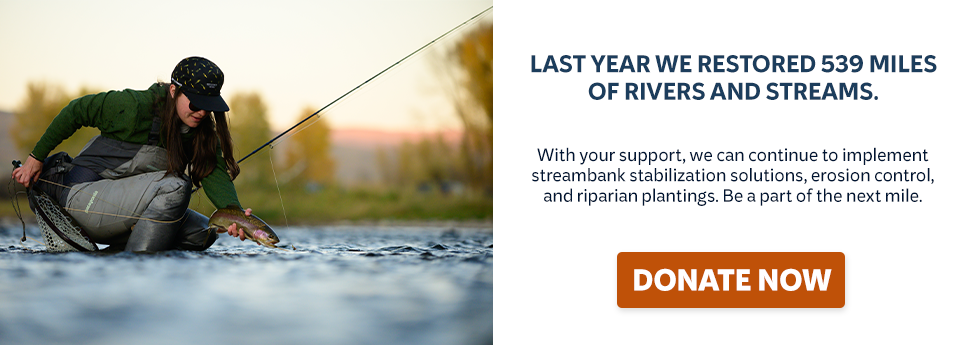Search results for “bear river watershed”
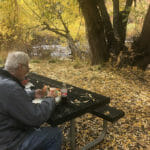
Terry Prettyman enjoys lunch while sitting by the Logan River on a beautiful fall day in Logan Canyon. Brett Prettyman/Trout Unlimited By Brett Prettyman It was a fishing trip I will never forget. My dad, on the other hand, had forgotten we caught fish by the time we got home. I won’t forget for many…
09/29/05 NEWS RELEASE For release September 29, 2005 For more information: Duke Welter 715-579-7538 Chris Wood 571-274-0601 Laura Hewitt 608-250-3534 U.S. SENATE APPROVES APPROPRIATION FOR RESTORATION PLANNING IN THE MIDWESTS DRIFTLESS AREA Arlington, VA The United States Senate has approved an appropriation to help with the planning for the restoration of the Midwests Driftless Area.…
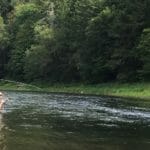
By Keith Curley The Delaware River Basin Commission (DRBC) has begun a rulemaking process to protect one of our most valuable fisheries from the impacts of hydraulic fracturing, formalizing a de facto moratorium in place since 2010. Across the country, Trout Unlimited advocates for responsible energy development, which involves protecting the highest quality habitats and…

These are the dog days of summer.
Anglers deeply disappointed in decision to withdraw from Paris Climate AccordTrout and salmon highly susceptible to impacts of climate change CONTACT:Shauna Stephenson / Trout Unlimited ssherard@tu.org / (307) 757-7861 (June 1, 2017) WASHINGTON D.C. The Trump Administration announced today that it would withdraw from the Paris Climate Change Accord. Chris Wood, President and CEO of…
FOR IMMEDIATE RELEASE CONTACT: Erin Mooney 703-284-9408 Trout Unlimited Opposes Gas Drilling in the Monongahela National Forest Marcellus Shale drilling would destroy native Eastern brook trout habitat. Arlington, Va.In a unanimous vote, Trout Unlimiteds (TU) West Virginia Council voted in favor of a moratorium on natural gas leasing in the Monongahela National Forest. The vote,…
FOR IMMEDIATE RELEASE Contact: Erin Mooney: (703) 284-9408, TU National Press Secretary TU Little River Chapter Receives $7,800 Grant for Brook Trout Genetics Study Knoxville, Tenn. — Trout Unlimited (TU), the nation’s oldest and largest coldwater fisheries conservation organization, today awarded a $7,800 Embrace-A-Stream grant to its Little River Chapter in Knoxville, Tennessee for a…
FOR IMMEDIATE RELEASE Contact: Erin Mooney, TU National Press Secretary, (703) 284-9408 James Piotrowski, Idaho Council Chair, (208) 332-3552 Chris Topmiller, East Yellowstone TU, (208) 587-2249 TU Ted Trueblood Chapter Receives $10,000 to reconnect Pierce Creek with the South Fork Boise River BOISETrout Unlimited, (TU) the nation’s oldest and largest coldwater fisheries conservation organization, today…
FOR IMMEDIATE RELEASE Contact: Erin Mooney, TU National Press Secretary, (703) 284-9408 Dave Sweet, Wyoming Council Chair, (307) 899-9959 Kani Seifert, Platte Valley TU, (307) 327-5604 TU Platte Valley Chapter Receives $10,000 to remove barrier on the East Fork Encampment River SARATOGATrout Unlimited, (TU) the nation’s oldest and largest coldwater fisheries conservation organization, today awarded…
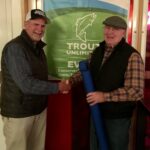
The Oregon Council of Trout Unlimited is proud to announce that Terry Turner and Dick Hollenbeck are the newest recipients of the Forest Service’s Rise to the Future Award. Both Turner and Hollenbeck hail from the Clackamas Chapter of Trout Unlimited (TU), where they have each served in various leadership capacities. Dick Hollenbeck also served…
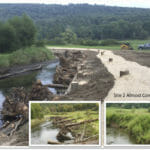
The Salmon Kill, locally referred to as Salmon Creek, is a picturesque stream in northwest Connecticut that flows from its headwaters of Mount Riga to the Housatonic River. The forested headwater streams of the Salmon Creek contain cold, clean water due to the undeveloped condition of the upper watershed, providing habitat for native brook trout.…
Five years of advocacy on behalf of native fish and wild places in the Gila National Forest
7/15/1999 Keystone Wants Huge Increase In Water For Snowmaking — But Doesn’t Want Public Review Keystone Wants Huge Increase In Water For Snowmaking — But Doesn’t Want Public Review Contact: 7/15/1999 — — Colorado conservationists today criticized Vail Resorts-owned Keystone Corporation’s attempt to avoid public oversight of its proposal to more than double the amount…
9/15/19999 Taking On Acid Rain Taking On Acid Rain Contact: 9/15/1999 — — WHAT IS ACID RAIN? Scientists have determined that acid rain develops when pollution, mostly from coal-fired electric power plants, enters the atmosphere and returns to the ground in the form of acid rain. Specifically, nitrogen oxides and disulfur oxide have been identified…
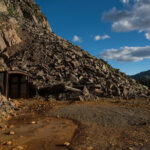
Trout Unlimited and the work we do to protect and restore our nation’s coldwater fisheries is multifaceted. Advocacy is significant part of what we do, but we are a lot more and it sets us apart from any other natio nal conservation organization. Throughout the country, staff and volunteers invest countless hours and tens of…
November 5, 2015 Testimony of Trout Unlimited to the Senate Committee on Agriculture, Nutrition, and Forestry hearing on: Wildfire: Stakeholder Perspectives on Budgetary Impacts and Threats to Natural Resources on Federal, State and Private Lands. Chairman Roberts, Ranking Member Stabenow, and Committee Members: My name is Chris Wood. I am the President and CEO of…

Recognizing Trout Unlimited’s amazing chapters, volunteers and partners is one of the most important parts of our organization’s annual meeting. This year in Redding, California, two chapters, five volunteers and four partners were singled out for their contributions to Trout Unlimited efforts across the nation. TU’s national conservation awards have been a part of our…
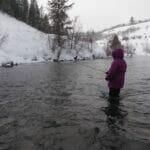
This time of the year is a great time to be out chasing trout. Winter doesn’t have to get in the way of that

JACKSON, Wyoming – Trout Unlimited (TU) and the Wyoming Game and Fish Department (WGFD) are excited to announce that the River Bend Ranch Fish Passage and Irrigation Improvement Project is currently underway and is expected to be completed by the end of November 2018. The collaborative project seeks to improve habitat and passage for Snake…
When you think of Farm Bill conservation, what comes to mind? Maybe fields full of pheasants or ringed by deer stands? Prairie potholes for waterfowl? What about fish – perhaps a little farm pond full of bluegills and bass? Our friends at the Theodore Roosevelt Conservation Partnership put together an excellent overview of how…


